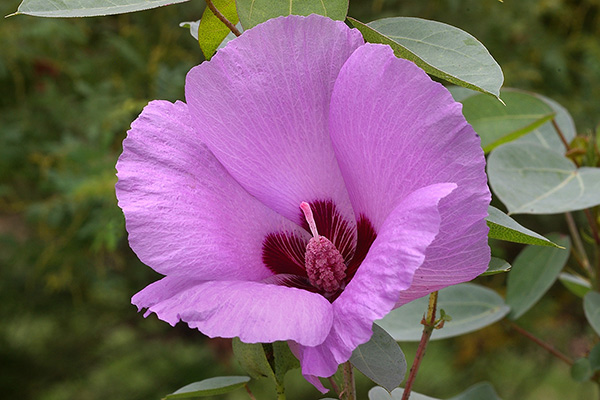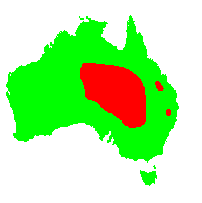General Description:
The genus Gossypium is noteworthy for its several species that produce the cottons of world commerce. There are about 40 species which are found mainly in arid areas of Mexico, Africa and Australia, where 10 species are known. G.sturtianum is widely distributed in the interior of Australia and is the floral emblem of the Northern Territory. The genus is closely related to the well known Hibiscus.
There are two varieties of Gossypium sturtianum recognised; var.sturtianum and var.nandewarense. The latter differs from the more common form in the much more open growth habit of the shrub and the lighter green foliage. Its flowers are larger but considerably less abundant. This variety derives its name from the Nandewar range near Narrabri in north-eastern New South Wales. It is also known from another limited area in the vicinity of the Expedition Range in eastern Queensland.
G.sturtianum is a shrub to about 1.5 metres in height with large ovate leaves to about 40 mm long. A characteristic feature of Gossypium is the presence of small, dark glands in most parts of the plant. These glands contain the substance gossypol which is toxic to non-ruminant animals The flowers are hibiscus-like, pink to mauve in colour with a dark red centre and about 40 mm in diameter. Flowers are seen for most of the year with a peak in late winter.
The species adapts well to cultivation, particularly in hot, dry climates, but can be grown in more humid areas in a well drained, sunny position. In colder climates the plants can be difficult to maintain. Free air circulation around the plant is essential to prevent fungal diseases. The plant is frost sensitive, although the var.nandewarense is able to withstand light frosts.
Propagation is relatively easy from both seed and cuttings.

Gossypium sturtianum
Photo: Brian Walters
 Australian Native Plants Society (Australia)
Australian Native Plants Society (Australia)